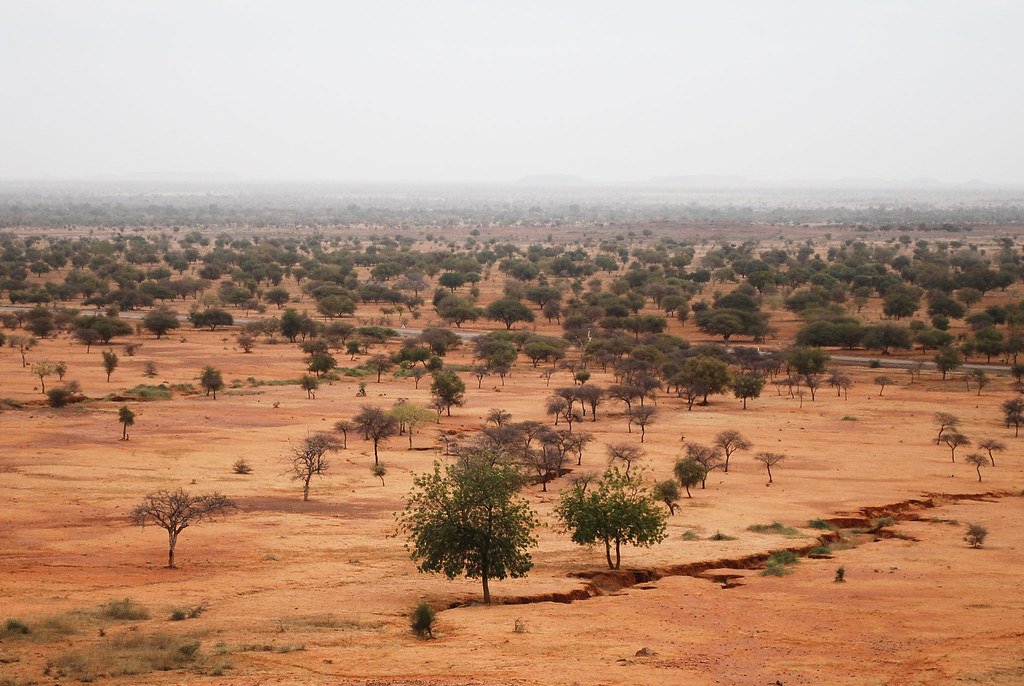What comes to mind when you hear the phrase “Great Wall”? Perhaps you are reminded of the Great Wall of China, or the wall former President Donald Trump vowed to construct along the United States-Mexico border. However, there is another “Great Wall”, one that may join the Great Wall of China as a World Wonder and will undoubtedly serve a more humanitarian purpose than Trump’s border wall.
The Great Green Wall is an African-led initiative that aims to construct an 8,000 kilometer “wall” of greenery that spans the width of the African continent, from Senegal to Djibouti. It promises to be a panacea, of sorts, for the myriad issues threatening not only Africa, but also the rest of the world – climate change, desertification, food insecurity, and migration.
Overview of The Great Green Wall
The idea for the Great Green Wall dates back to the 1970s, when previously fertile land in the Sahel, an impoverished region near the Sahara Desert, became dry and barren as a result of a growing population and land overuse. The inability of the land to support life gave rise to “food and water shortages, recurrent conflicts over declining natural resources, mass unemployment, and forced migration.”
In the 1980s, African leaders recognized that a long-term solution was required, sparking the idea for a Great Green Wall. However, it wasn’t until 2007 that leaders of the African Union made the Great Green Wall a reality. While the initiative began with the support of only eleven countries, over twenty countries are now a part of this movement.
According to their official website, the Great Green Wall “aims to restore 100 million hectares of currently degraded land, sequester 250 million [tons] of carbon, and create 10 million jobs in rural areas” by 2030. This goal is in line with the United Nations’ Sustainable Development Goals for 2030, which emphasize the well-being of the Earth and its inhabitants. Not only will the Great Green Wall restore degraded land, but it will also improve food and water security, ensure better health outcomes, create jobs and stimulate economic growth, and increase gender equity.
A number of countries have made significant progress towards achieving the aforementioned goal –
- Burkina Faso: 3 million hectares of land have been rehabilitated via a farming technique known as zaï.
- Ethiopia: 15 million hectares of land have been restored.
- Niger: 5 million hectares of land have been rehabilitated, allowing for the production of 500,000 tons of grain per year. This is enough to feed approximately 2.5 million people .
- Senegal: 12 million drought-resistant trees have been planted in the past ten years.
The Great Green Wall Supports People and Planet
In her article for this month’s Impactfull series, “This Land is Your Land, This Land is My Land: Climate Refugees in Our Cultural Landscape”, Grace defines climate refugees as “individuals who face the persistent fear and threat of climate change.” This is the case for many of the migrants from the Sahel region. These refugees are forced to reckon with both the direct and indirect impacts of climate change: infertile land, long periods of drought, and recurrent conflicts over the few available plots of fertile land.
The Great Green Wall discourages migration by addressing a number of these issues. The majority of these issues stem from the lack of fertile land, or the desertification, of the African continent. As such, farmer-managed natural regeneration (FMNR), a technique where farmers protect and prune shrubs and trees that have grown naturally from stumps, existing root systems, or seeds in the soil, has been employed by African farmers to regreen and fertilize significant portions of the Sahel. Other low-cost, low-tech methods include zaï, which involves the creation of deep pits in hardened soil to enhance water infiltration and retention during periods of drought, and employing rootstock to grow shrubs and trees in cleared fields.
Due to the semi-arid nature of the Sahel, it is imperative that the right trees are being planted in the right areas for the right purpose. For instance, the Faidherbia albida is dormant, or loses its leaves, during the rainy season, which fertilizes the surrounding soil. Since they have dropped their leaves, these trees do not provide shade for crops during the growing season, allowing them to receive ample amounts of sunlight. A combination of local farming practices and selecting the right greenery has resulted in increased tree cover, soil carbon content, and crop yields, which has further led to increased food security, better health outcomes, and higher incomes. As food security, health, and income improve, migration from the Sahel should decrease.

Zaï Pits. Retrieved from http://www.fao.org/3/y4690e/y4690e09.htm. 
Faidherbia albida. Retrieved from http://blog.worldagroforestry.org/index.php/2016/04/26/while-raising-crop-yields-african-thorn-tree-faidherbia-albida-captures-large-amounts-of-carbon/
Is This Viable in the United States?
In regions with similar, semi-arid climates to that of the Sahel, such as the American West, a Great Green Wall could be a realistic way to mitigate some of the effects of climate change. So long as the greenery that is planted is thoroughly researched and fits in the native ecosystem of the region, this a promising way to mitigate climate change, while also increasing food security, job stability, and incomes for impoverished regions throughout the world.
- Beef. It’s What’s Not for Dinner. – Plant-Based “Meat” and the Climate Crisis - January 16, 2022
- Activism or Slacktivism? Where ‘The Activist’ on CBS Went Wrong - September 17, 2021
- Combating Climate Change: The Great Green Wall - July 20, 2021


